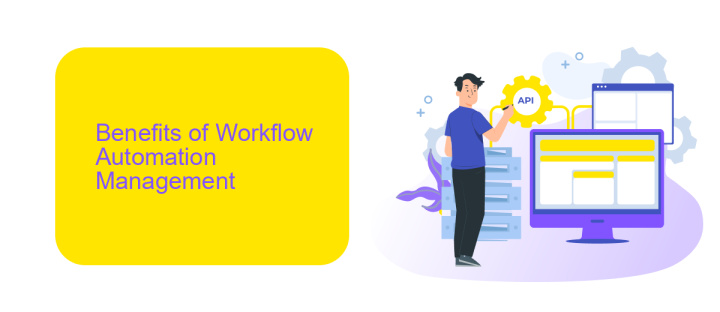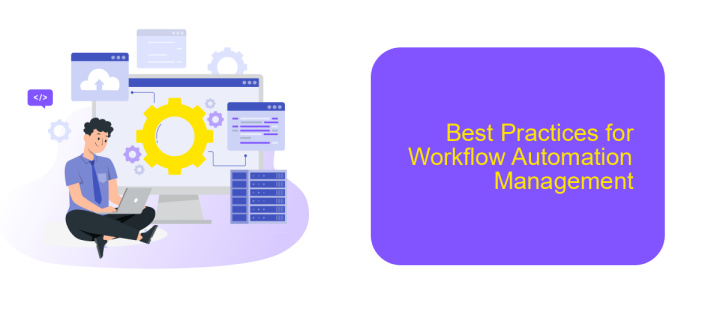Workflow Automation Management
Workflow Automation Management is revolutionizing the way businesses operate by streamlining processes, reducing human error, and enhancing productivity. By automating repetitive tasks, organizations can focus on strategic initiatives and innovation. This article explores the key benefits, tools, and best practices for implementing workflow automation to optimize your business operations and stay competitive in today's fast-paced market.
Introduction
Workflow automation management is revolutionizing the way businesses operate by streamlining processes, reducing manual tasks, and enhancing productivity. With the right tools and strategies, organizations can automate repetitive tasks, allowing employees to focus on more strategic activities that drive growth and innovation.
- Improved efficiency and accuracy
- Reduction in operational costs
- Enhanced collaboration and communication
- Scalability and flexibility
One of the key components of successful workflow automation is the seamless integration of various applications and services. Platforms like ApiX-Drive facilitate these integrations by providing a user-friendly interface and robust functionalities. This enables businesses to connect different tools without the need for extensive coding knowledge, ensuring that all parts of the workflow are synchronized and operate smoothly. As a result, companies can achieve higher levels of efficiency and maintain a competitive edge in their respective industries.
Benefits of Workflow Automation Management

Workflow automation management offers numerous benefits, significantly enhancing operational efficiency and productivity. By automating repetitive tasks, businesses can reduce human error and free up valuable time for employees to focus on more strategic activities. This leads to faster task completion and improved accuracy, ultimately boosting overall performance and profitability. Additionally, automation provides better visibility into processes, enabling managers to monitor workflows in real-time and make data-driven decisions.
Another significant advantage is the seamless integration of various tools and systems. Services like ApiX-Drive facilitate the connection between different applications, ensuring a smooth and cohesive workflow. This integration minimizes the need for manual data entry and reduces the risk of inconsistencies across platforms. By streamlining communication and data flow, businesses can enhance collaboration and ensure that all departments are aligned. Overall, workflow automation management not only optimizes processes but also fosters a more agile and responsive organizational structure.
Challenges of Workflow Automation Management

Workflow automation management presents several challenges that organizations must navigate to ensure smooth and efficient operations. These challenges can hinder the implementation and optimization of automated workflows, affecting overall productivity.
- Complexity of Integration: Integrating various systems and tools can be a daunting task. Services like ApiX-Drive can simplify this process by providing seamless integration solutions, but the initial setup can still be complex.
- Change Management: Transitioning from manual to automated workflows requires significant change management. Employees need to adapt to new processes, which can lead to resistance and a steep learning curve.
- Maintaining Flexibility: Automated workflows need to be flexible enough to accommodate changes in business processes. Rigid workflows can become obsolete quickly, necessitating frequent updates and adjustments.
- Data Security: Ensuring the security of data as it flows through automated processes is critical. Any vulnerabilities can lead to data breaches and compliance issues.
- Cost: Implementing and maintaining workflow automation can be expensive. Organizations must balance the cost with the potential benefits to ensure a positive return on investment.
Addressing these challenges requires a strategic approach that includes thorough planning, continuous monitoring, and the use of reliable tools like ApiX-Drive for integration. By doing so, organizations can harness the full potential of workflow automation while mitigating potential pitfalls.
Best Practices for Workflow Automation Management

Effective workflow automation management requires careful planning and execution. Begin by identifying repetitive tasks and processes that can be automated to save time and resources. Analyze each step of your workflow to determine which tasks are best suited for automation and which require human intervention.
Once you've identified the tasks to automate, choose the right tools and platforms to facilitate the automation process. Platforms like ApiX-Drive can simplify the integration of various services and applications, ensuring seamless data flow between them. This helps in reducing manual errors and increasing efficiency.
- Document your workflows thoroughly before automating them.
- Test automated processes in a controlled environment.
- Monitor and review automated workflows regularly.
- Ensure team members are trained on using automation tools.
- Continuously optimize and update workflows as needed.
By following these best practices, you can achieve a more streamlined and efficient workflow. Automation not only saves time but also enhances productivity and accuracy, allowing your team to focus on more strategic tasks.
Conclusion
In conclusion, Workflow Automation Management has become an indispensable tool for modern businesses, significantly enhancing efficiency and productivity. By automating repetitive tasks and streamlining processes, organizations can focus on strategic initiatives and innovation. The integration of various services and tools, such as ApiX-Drive, further simplifies the automation process, allowing seamless connectivity between different applications and systems.
As companies continue to adopt and evolve their automation strategies, the importance of a robust workflow management system cannot be overstated. It not only reduces operational costs but also minimizes human errors and improves overall performance. Embracing these technologies will undoubtedly lead to a more agile and competitive business environment, paving the way for sustainable growth and success in the digital age.
FAQ
What is workflow automation management?
How can workflow automation improve business operations?
What types of processes can be automated?
How do I start implementing workflow automation in my business?
What are the challenges of implementing workflow automation?
Routine tasks take a lot of time from employees? Do they burn out, do not have enough working day for the main duties and important things? Do you understand that the only way out of this situation in modern realities is automation? Try Apix-Drive for free and make sure that the online connector in 5 minutes of setting up integration will remove a significant part of the routine from your life and free up time for you and your employees.

